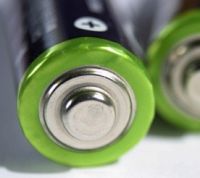

Battery collection figures for the first three months of the year published by the Environment Agency indicate a good start to meeting the end of year targets. The UK is committed to collecting 10% of batteries sold by the end of 2010 (around 4,474 tonnes of batteries). The UK collected 849 tonnes of batteries in the first quarter. In the same period, 9,898 tonnes of batteries were sold.
The Environment Agency’s Bob Mead said, “We believe the figures represent a very good start. The amount reported as collected is almost 2% of the total amount of portable batteries placed on the market in 2009. Given that historic figures suggest that the annual rate of collection, recycling and recovery of portable batteries in the UK is about this amount, this represents a good start to achieving the targets.”
Nonetheless, compliance scheme BatteryBack Chairman Peter Hunt is concerned that battery collection will fall flat. He said, “We have increased our collection installations to over 15,000, but we cannot keep on doing this. We’ve got to change people’s awareness regarding battery recycling. We are not getting the core 70% of the population who would do it as long as it is made easy for them.”
In contrast, Budget Pack managing director Steve Clark believes the figures reflect a 72% collection rate for the quarter. He said, “We were always expecting a reduced tonnage because it is a brand new scheme and compliance schemes are having to set up arrangements and install collection points. It will obviously be slower than the rest of the year.”
Moreover, Mr Mead said it was up to compliance schemes to deliver information campaigns to end-users of portable batteries. Commenting on the UK’s ability to meet the 2012 target of 25% battery collection, he said, “Moving from the UK’s historic rate of collection and recycling (2-3%) to the 25% target will require major effort from all concerned.”
For more information, see: